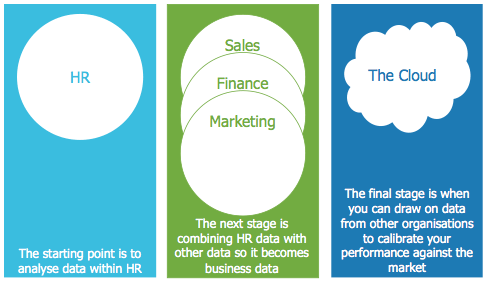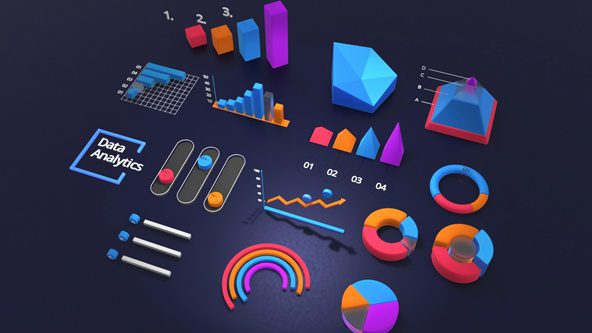Analytics and EBHR
HR and Big Data Rule 3 – Join your HR data with other functions
Nick Holley, CRF Director of Learning
In moving from HR focused reporting to business-driven persuasive analytics we must question whether this activity is best handled in isolation within HR. In all my reading and research, the best organisations recognise that workforce insights only add value when linked to broader customer and financial insights. Therefore, when focusing their analytics activity they did it with other functions.
That is why, in developing CRF Learning’s On Demand programme Workforce Analytics and Storytelling, a key focus was to help learners understand the benefit of business-focused analytics over HR-centric reporting. Try a module of the full course for free here.
In this blog I’ll explore how you can join your HR data with other functions.
FINANCE
If the focus of HR analytics is on business performance, we have to link HR data to financial data to ensure the commercial logic. The link to finance is critical to ensure that headcount is linked to cost, and in the most successful organisations we saw a real effort to link finance and HR with weekly meetings, and in one case co-locating them to break down barriers and ensure constant communication.
As the HR director of one manufacturing organisation shared: “A key lesson was to build the organisation around the need. In the past it never occurred to us to bring finance and HR together, but we got great insights when we did. In the past we were told to take the financial element out of the design for the manpower-planning department as cost was owned by finance, even when the drivers of cost were the numbers of people. Finance said, ‘it’s not your business’. They moved to ‘it would be useful so long as we control the system’. Then there was a light bulb moment ‘why don’t we integrate the two departments’. It saved £40 million.”
This collaboration and respect needs to be two-way – for whilst finance can identify the cost per FTE, they aren’t as sophisticated in thinking about the behaviours and other issues that drive the cost.
OTHER BUSINESS AREAS
The link to customer facing areas is also important to ensure linkages are made to revenue generation.
“Think bigger than HR – your organisation will have a wealth of different information and data sources, which can be coupled with external data through the use of analytic tools to bring powerful insights to how your business is or could be operating,” advised the global HR director of one retail organisation.
As with finance, historically there seems in many cases to have been a disconnect where marketing or sales want their data like this, whilst HR wants it like that, with the result that hugely insightful correlation analysis between different data isn’t even thought about, let alone done.
This version of Big Data really shows the power of linking internal data to external benchmarks and data including economic indicators, competitor performance and social media.
IT
HR won’t nail analytics if it tries to do it on its own. It needs IT support, but the challenge in securing this, as in most cases, is that HR is not seen to be a top priority. Without full support from IT, any HR analytics initiative is doomed to failure. The best resources will not be made available and issues around security, integration and implementation will not be addressed until too late. Equally there is a danger that IT leads the definition phase without understanding HR’s needs. HR must get in the driving seat to ensure it has the right IT tools and data to address the key HR and business issues – not the tools that IT thinks are the latest and greatest from a technology standpoint.
ACROSS HR
Finally, the linkages within HR keep coming up as a problem. The adoption of the three-part model in HR (HRBPs, centres of excellence and shared services) has made the problem worse, with issues around the ownership of data or of the analytical capability often reducing internal collaboration. More complex reporting lines often mean data isn’t consolidated until it reaches the HR director, leaving it to the individuals to make it work despite the structure. Different parts of HR collect data on different incompatible systems (resourcing, performance management, LMS etc) for different reasons, making it impossible to compare even if the desire is there. It is critical that HR does not allow the model to disaggregate HR data and HRDs have to drive this collaboration from the top.
The key isn’t where it sits, but that HR understands the power of analytics and applies it to the right issues in collaboration within and with other functions. We’ll discuss this next week.






